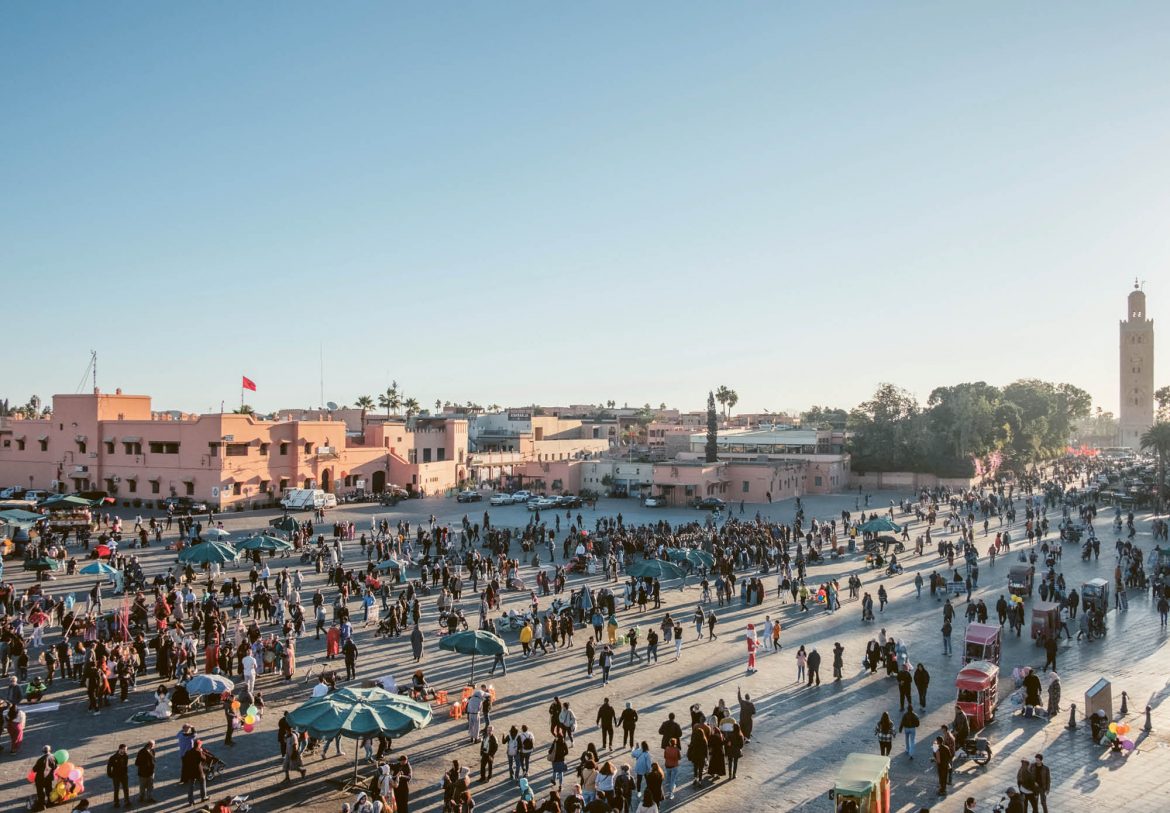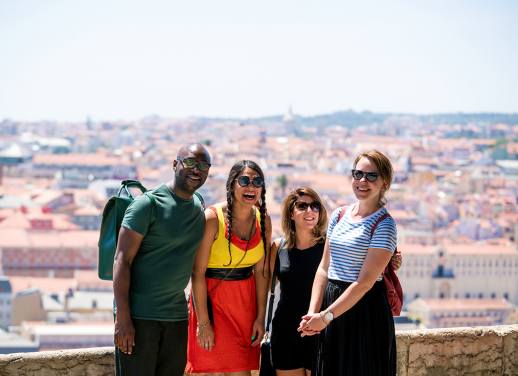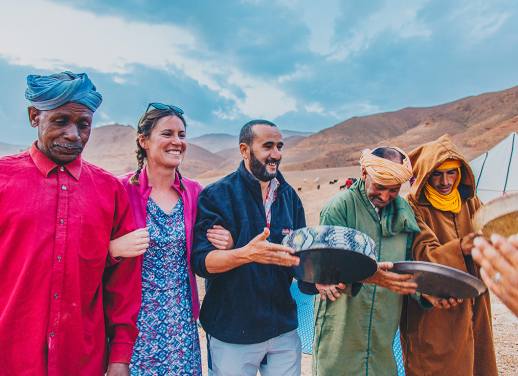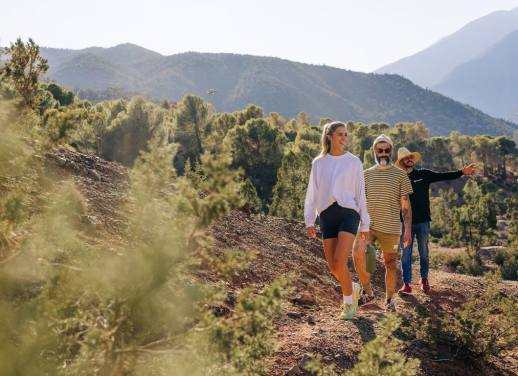As the day winds to an end in Marrakech, the sun creeps toward the horizon, sending a few final rays of orange light streaming across the sky. In the heart of the city though, at bustling Djemaa El Fna square, things are only just firing up.
Djemaa El Fna is a gathering place and community market infused with Moroccan culture and tradition. By day it’s packed with tourists and locals, here for its colourful displays of fresh produce, spices and traditional handicrafts, cooling off with cups of freshly squeezed blood-orange juice along the way.
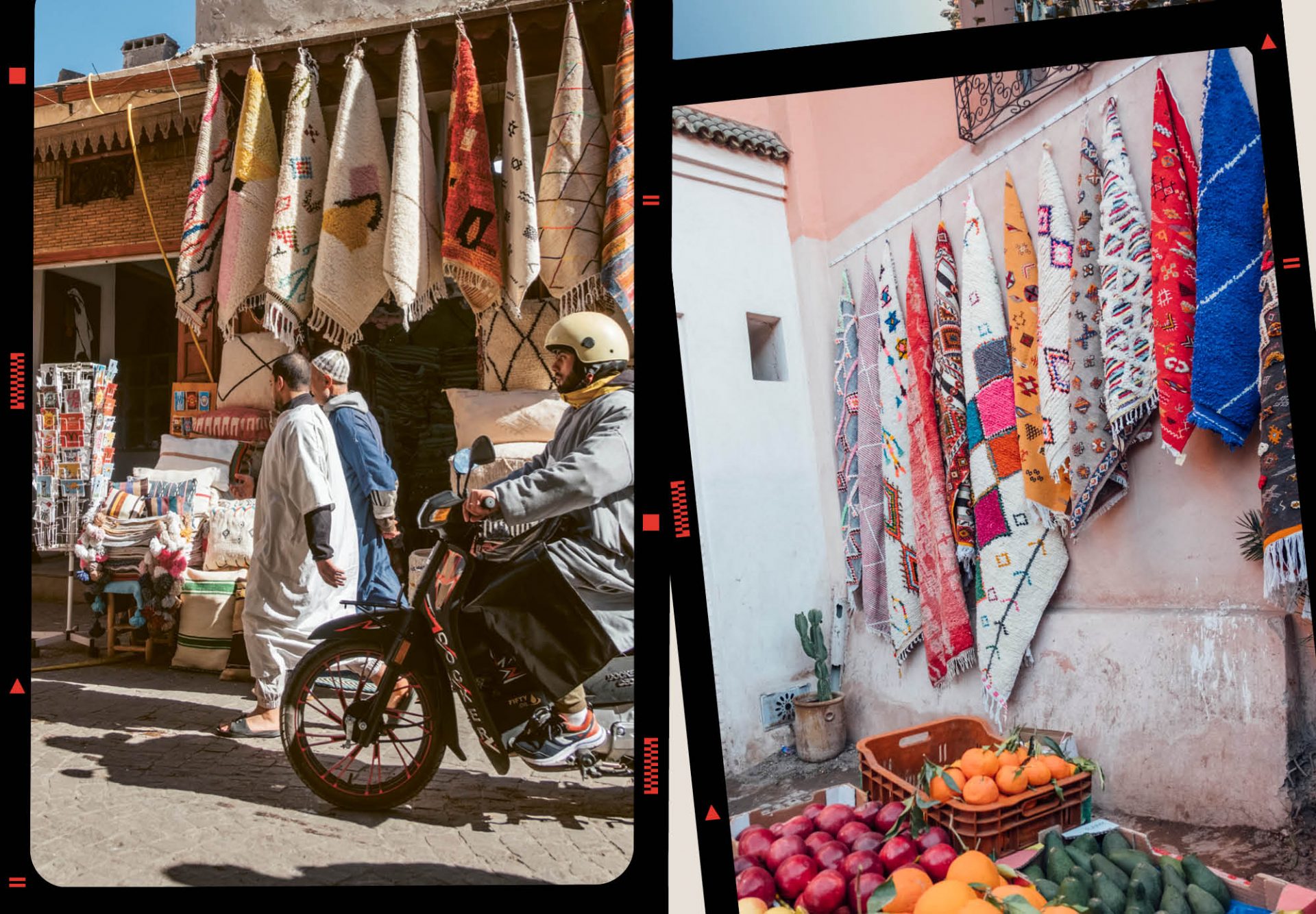
Then dusk descends and the energy shifts. Cars are ushered out as the pathways are cleared for the influx of people, entertainers and musicians about to pour in. Street food vendors bring fire and smoke. Lamps flicker on and the sprawling market transforms.
‘It’s more beautiful at night than in the afternoon,’ says Intrepid Morocco leader Adil. ‘People, they come after they finish their jobs. They come after a stressful day to entertain themselves. Even the tourists, they come as well. A lot of travellers come to this place.’
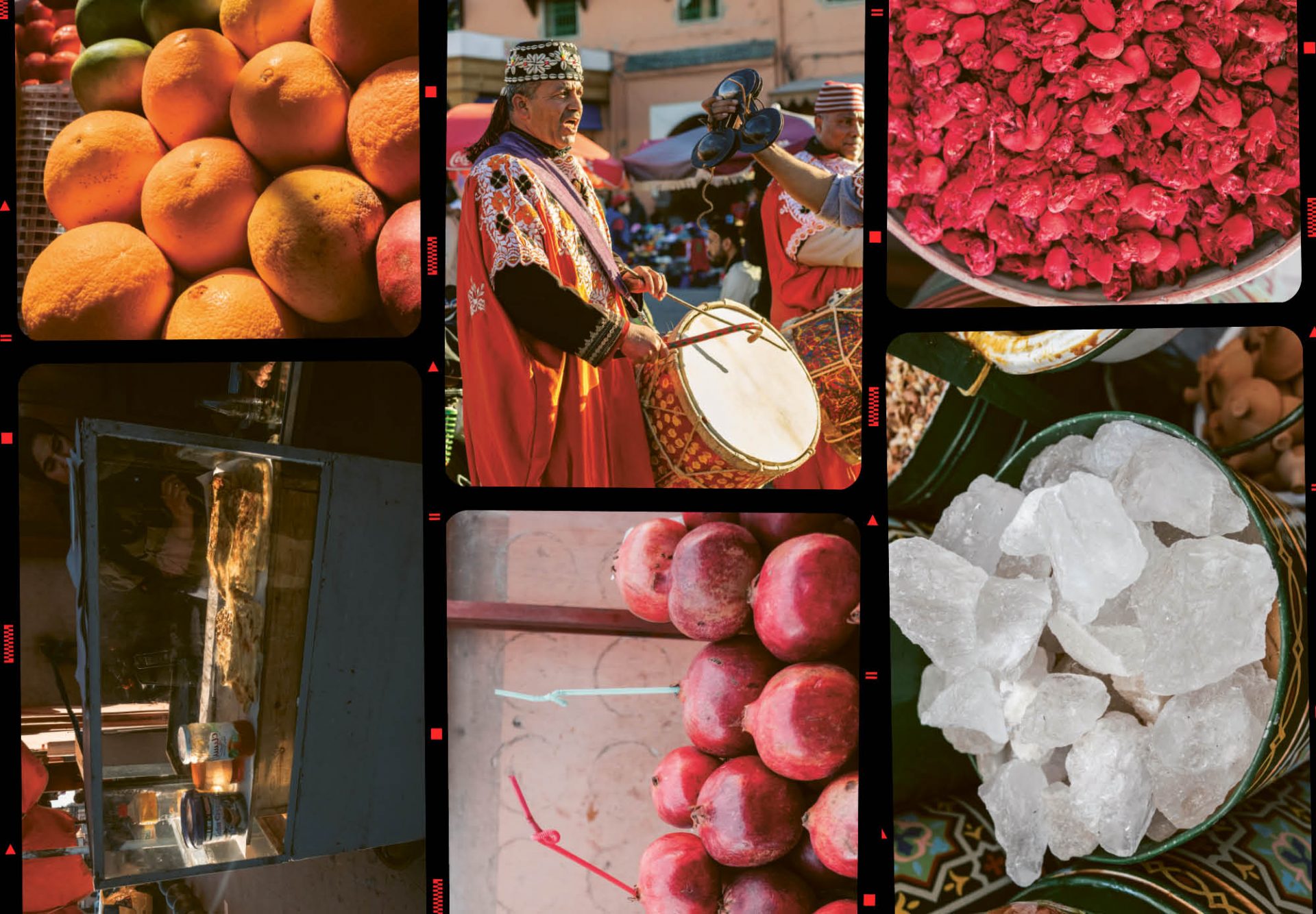
Suddenly everywhere you look there’s a food stall, each one hawking something different. ‘We call them mobile restaurants,’ says Adil. ‘They come, they settle down and they sell until midnight, one o’clock, and then after they go.’
Now the hot air is rich with the scent of grilled meats: kebabs, tagines, cumin-spiced lamb cooked over hot coals. There are sandwiches stuffed with spicy Merguez sausages and vegetarian soups aromatic with saffron and coriander. One stall sells flash-fried fish and calamari, another grilled sardines with chermoula. Steamed sheep’s brain and snails in broth are local specialties.
What makes Marrakech unique is Djemaa El Fna square. You have to come to experience this beautiful place.
But there’s more to Djemmaa El Fna than street food. For centuries it’s been a space for entertainment, playing host to Amazigh troupes, fortune tellers, acrobats, Gnawa musicians and henna tattoo artists.
‘If we’re talking about Moroccan traditions, we’re getting back to what we call halqah, which is a circle,’ says Adil. Each halqah is formed by onlookers – sometimes hundreds of them – around a different act. Of all the performers, perhaps most popular are the charismatic storytellers. Adil says there are two types.
‘Mainly – the ones that are very important – they are funny. Mainly jokes. Where people come, they’ll laugh,’ he says. ‘And some other ones, not that many, are only for wisdom.’
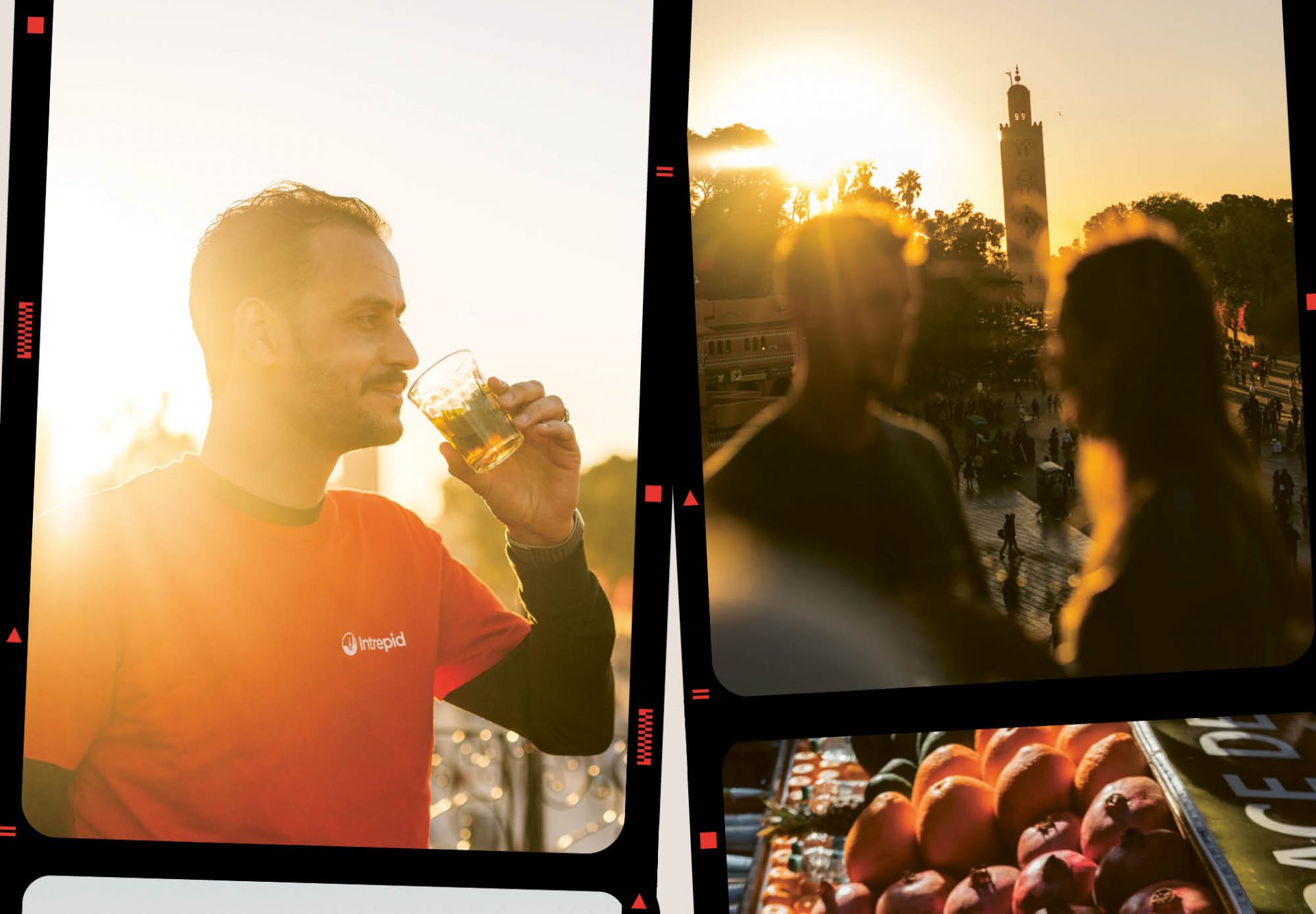
It’s this tradition of passing down stories, traversing cultures and generations, that has helped keep the spirit and soul of Djemaa El Fna – now recognised and protected as a UNESCO heritage site – alive and so vibrant for so long.
‘It’s a preserved place,’ Adil says. ‘What makes Marrakech unique is Djemaa El Fna square. You have to come to experience this beautiful place.’
Are you good to go? Check out Intrepid’s range of small group adventures in Morocco.

